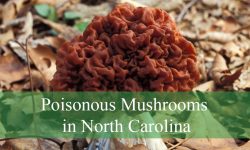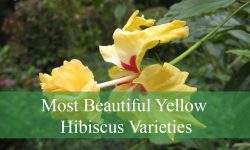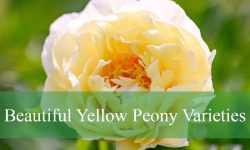Fir trees are some of the most majestic and versatile conifers found in forests around the world. Known for their iconic shape, tall stature, and aromatic needles, fir trees are widely appreciated for both their beauty and their ecological importance. In this guide, we’ll explore 37 types of fir trees, providing detailed information on their characteristics, habitats, and identification features.
Discovering the different types of fir trees can be fascinating, especially when you learn how each species adapts to various climates and environments. If you are a gardener, a nature enthusiast, or simply curious about the diversity of trees, this article will offer valuable insights into the unique traits of fir trees. From the towering Abies grandis to the rare Abies beshanzuensis, each type brings its own charm and significance to the landscape.
In addition to identifying these remarkable trees, we’ll provide useful pictures and tips to help you recognize and differentiate between the various species. By the end of this article, you’ll have a deeper understanding of the 37 types of fir trees, making it easier to appreciate and identify them in their natural habitats. Let’s dive into the world of fir trees and discover their many wonders!
North American Fir Trees
Abies balsamea – Balsam Fir
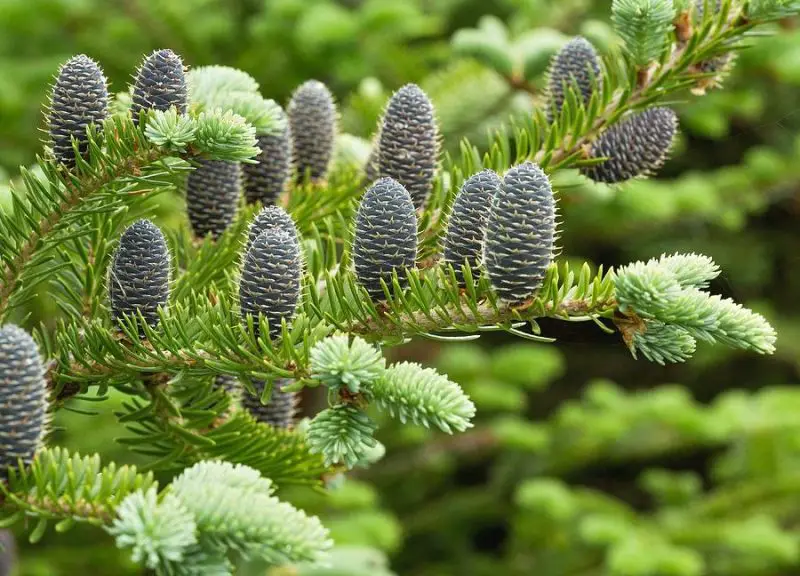
The Balsam Fir is a medium-sized evergreen tree native to eastern and central Canada and the northeastern United States. It is known for its narrow, spire-like crown and soft, dark green needles that emit a pleasant, resinous fragrance when crushed. The bark is smooth and gray with resin blisters, especially on younger trees.
This species is commonly found in boreal forests and prefers cool, moist climates with well-drained, acidic soils. It grows naturally at higher elevations and in lowland areas with sufficient moisture. Balsam Fir cones are upright, cylindrical, and purplish before maturing to brown, disintegrating on the branch to release seeds.
To cultivate Balsam Fir, plant in full sun to partial shade in a location with good air circulation. It requires regular watering during dry spells and benefits from mulch to keep the roots cool and moist. This tree is hardy in USDA zones 3 to 6, making it suitable for colder regions.
Abies concolor – White Fir
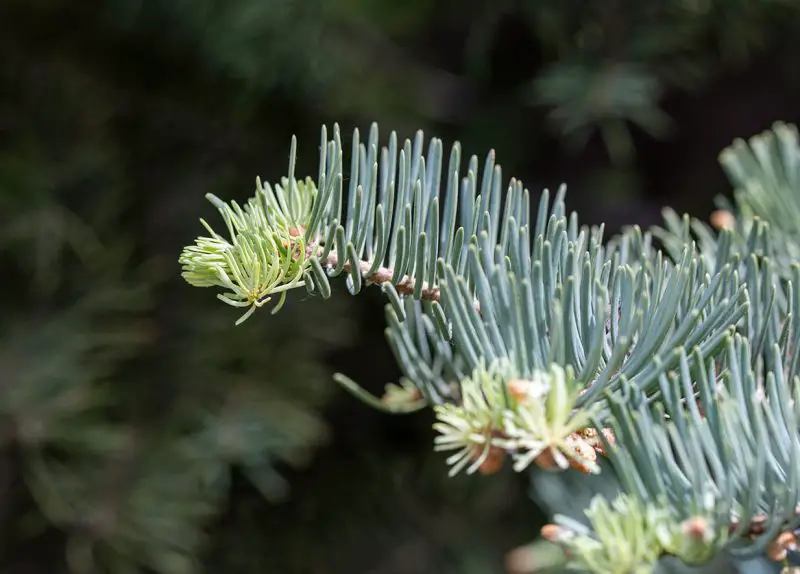
White Fir is a tall, ornamental fir tree native to the western United States, especially in the Sierra Nevada and Rocky Mountains. It features long, soft, blue-green needles that curve upward and emit a citrus-like scent when crushed. Its conical shape and silvery appearance make it popular in landscaping.
This fir thrives in mountainous regions and is adapted to dry, rocky slopes and well-drained soils. White Fir can grow quite tall—up to 200 feet in the wild—and its bark matures from smooth and gray to deeply furrowed and reddish-brown with age. Cones stand upright and break apart at maturity, typical of firs.
White Fir is tolerant of drought once established and prefers full sun but can handle partial shade. It is best planted in areas with minimal humidity and good air circulation to prevent fungal issues. Suitable for USDA zones 4 to 7, it is widely used for windbreaks and as a Christmas tree.
Abies grandis – Grand Fir
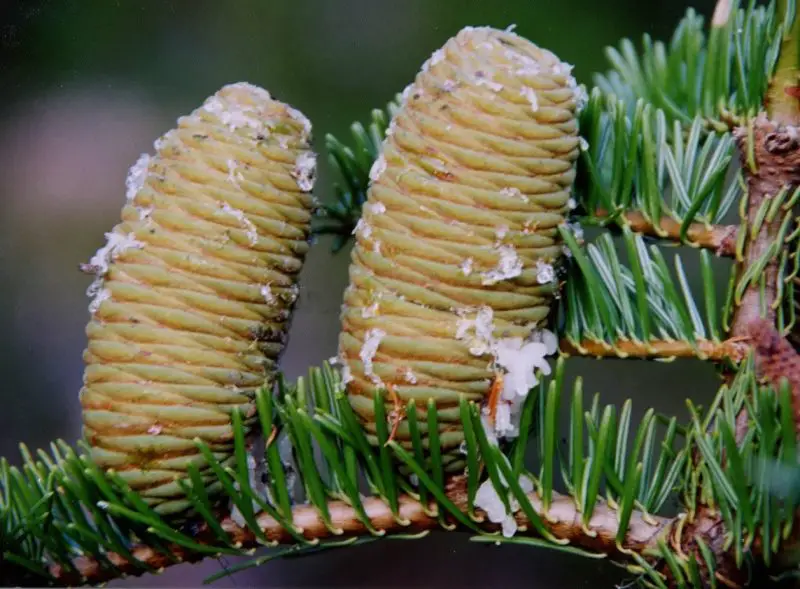
The Grand Fir is one of the tallest fir species, often exceeding 200 feet in height in its native Pacific Northwest. It is recognized by its glossy, dark green needles arranged in two distinct rows on either side of the twig, giving the branches a flat appearance. The needles have a sweet, citrusy aroma.
It grows in moist, mountainous forests and often coexists with Douglas fir, hemlocks, and redwoods. This tree prefers deep, well-drained soils and can tolerate heavy rainfall. Grand Fir cones are large and cylindrical, sitting upright on the upper branches.
Grand Fir needs full to partial sunlight and consistent soil moisture, especially during its early years. Mulching helps retain moisture and regulate temperature around the roots. It is hardy in USDA zones 5 to 7, and while majestic, it requires space due to its mature size.
Abies lasiocarpa – Subalpine Fir
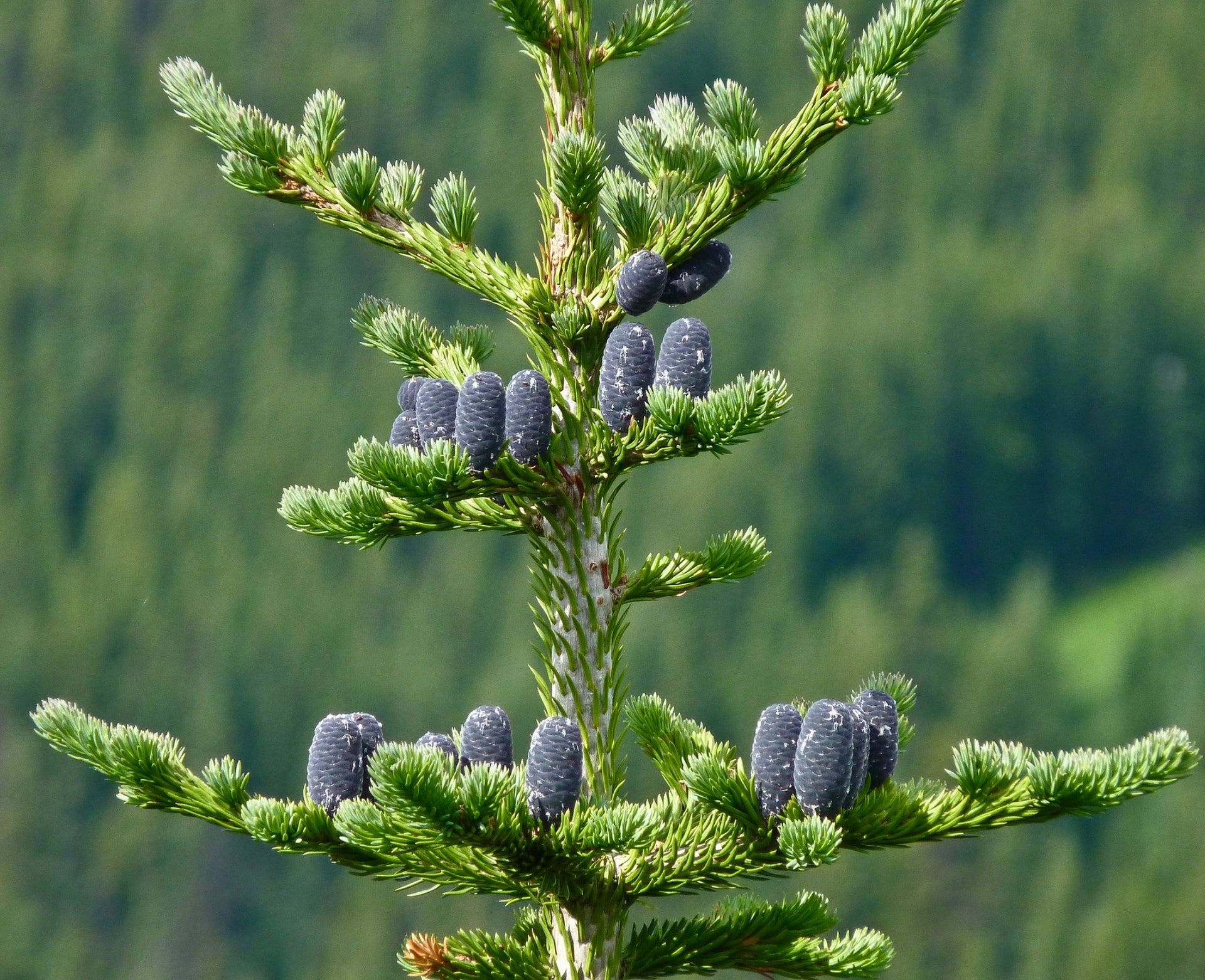
The Subalpine Fir is a narrow, spire-shaped evergreen that thrives in cold, high-elevation regions of the western United States and Canada. Its short, bluish-green needles have a soft texture and grow densely around the branches, giving a bottle-brush appearance. The bark is gray and smooth, marked with resin blisters.
This fir is typically found just below the tree line in mountainous areas, forming part of subalpine forest communities. It is extremely cold-hardy and adapted to snowy, well-drained slopes with acidic soils. The cones are purple and upright, breaking apart while still on the tree.
Subalpine Fir grows slowly and should be planted in cool climates with partial to full sunlight. It needs moist, well-drained soil and protection from hot, dry winds. Ideal for naturalistic or alpine-style gardens, it thrives in USDA zones 3 to 6 and requires minimal pruning.
Abies magnifica – California Red Fir
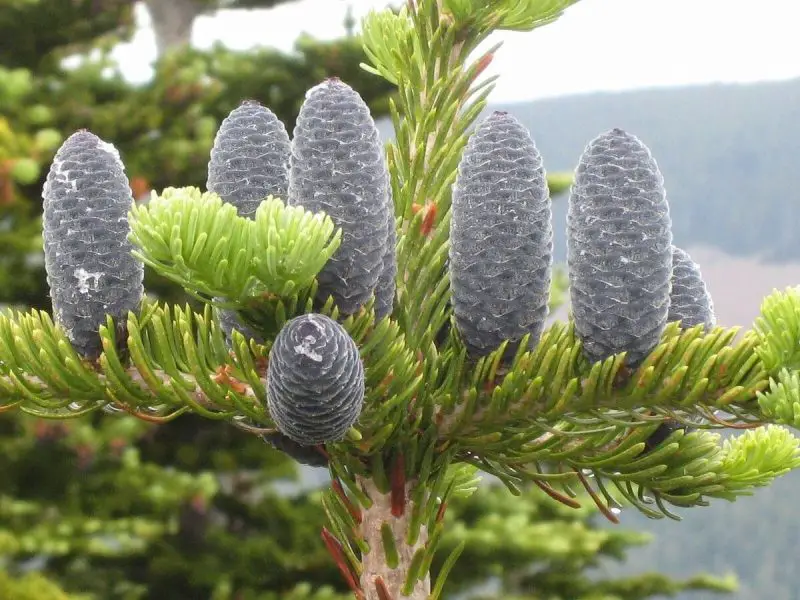
The California Red Fir is a striking, tall conifer native to the mountains of California and southern Oregon. It has dense, upward-curving blue-green needles and thick, reddish-brown bark that becomes deeply furrowed with age. The overall shape is symmetrical and pyramidal, ideal for large landscapes.
It is found at high elevations, often above 5,000 feet, in the Sierra Nevada and Cascade ranges. This species prefers volcanic or granitic soils that are well-drained and slightly acidic. The cylindrical cones grow upright and disintegrate when mature, a characteristic feature of fir trees.
California Red Fir requires full sun and thrives in cool, humid environments with snowy winters. It needs deep, slightly acidic soil and benefits from consistent moisture during the growing season. Best suited for USDA zones 5 to 7, it is not ideal for hot or dry climates but makes an excellent tree for high-altitude planting.
Abies procera – Noble Fir
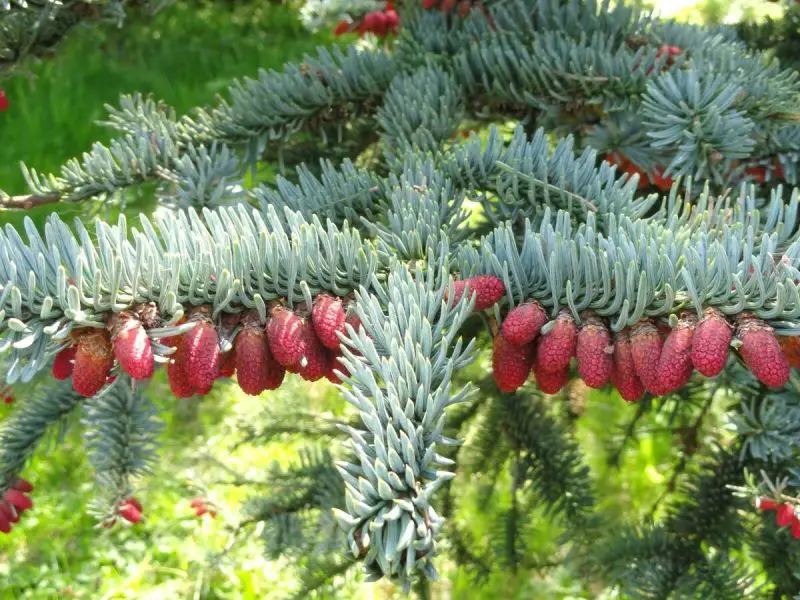
The Noble Fir is one of the tallest and most majestic fir species, native to the Cascade and Coast Ranges of the Pacific Northwest. It features stiff, bluish-green needles that are arranged in an upward curve on the branch, giving it a tidy, layered appearance. The bark is gray and smooth when young, becoming reddish and deeply furrowed with age.
This species grows in high elevations, often above 3,000 feet, and thrives in cool, moist environments with well-drained, acidic soils. Noble Fir is easily distinguishable by its large, barrel-shaped cones with prominent bracts that stick out beyond the cone scales. These cones disintegrate on the tree after maturing.
To grow Noble Fir, plant in full sun with rich, moist, and well-aerated soil. It needs consistent watering during the growing season and prefers a cool climate with good air circulation. This species is hardy in USDA zones 5 to 6 and is widely cultivated as a premium Christmas tree due to its form and needle retention.
Abies amabilis – Pacific Silver Fir
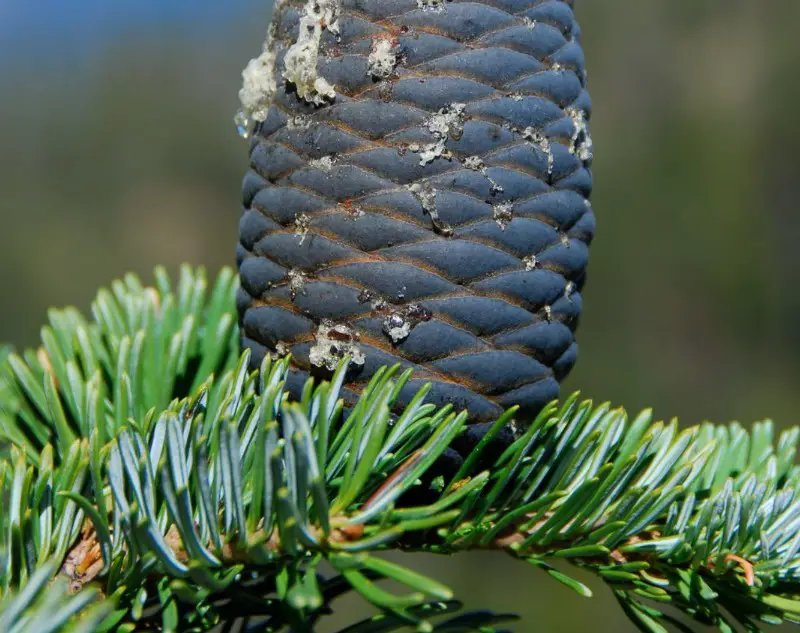
The Pacific Silver Fir is a large, graceful conifer native to the Pacific Northwest, particularly in coastal and subalpine forests. It has glossy, dark green needles with silvery undersides, arranged in flat sprays. The smooth, gray bark is marked with resin blisters, especially in younger trees.
This fir prefers cool, moist habitats and is commonly found in foggy mountain slopes and valleys. It grows in deep, acidic soils and is usually associated with western hemlock and mountain hemlock in mixed conifer forests. Its cones are upright, cylindrical, and reddish-purple when young.
Pacific Silver Fir should be planted in partial shade to full sun in cool, humid regions. It requires regular moisture and protection from hot, dry conditions. Best suited to USDA zones 5 to 7, this tree is valued for its ornamental appeal and shade tolerance in native woodland plantings.
Abies lowiana – Sierra White Fir
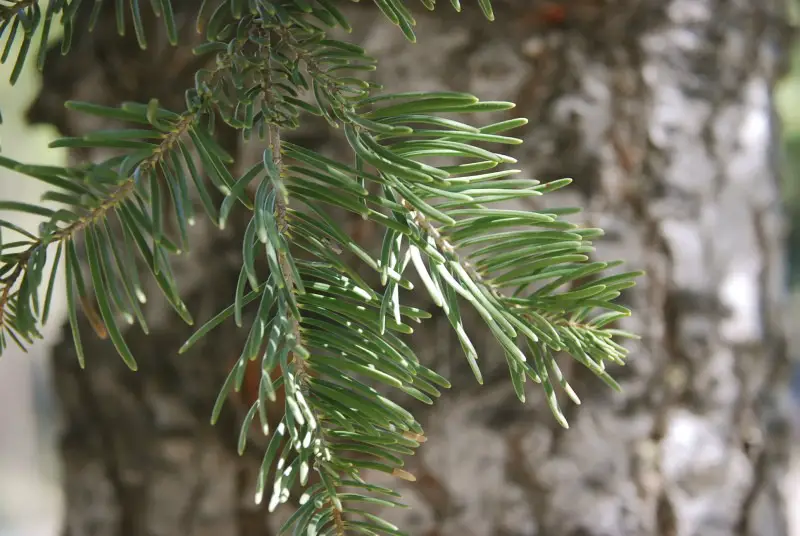
Sierra White Fir is a western fir species closely related to the White Fir but typically found at higher elevations in California’s Sierra Nevada and southern Oregon. It features long, bluish-green needles that radiate around the branch and a narrow, conical crown. The bark is light gray and becomes rough with age.
This tree grows in montane forests and is adapted to cold winters and dry summers. It thrives in well-drained soils and is tolerant of a wide range of elevations. Its cones are upright, brown to purplish, and disintegrate to release seeds, typical of fir species.
To cultivate Sierra White Fir, plant in a location with full sun and good drainage. It prefers slightly acidic soil and benefits from supplemental water during prolonged droughts. Hardy in USDA zones 5 to 7, it is often planted for reforestation and landscaping in mountainous or high-altitude settings.
Abies fraseri – Fraser Fir

Fraser Fir is a small to medium-sized fir native to the Appalachian Mountains in the southeastern United States. It has short, soft, dark green needles with silvery undersides, arranged in flat sprays along the branches. The bark is smooth and gray with resin blisters, especially in younger specimens.
This species grows at high elevations, typically above 4,000 feet, and is well-suited to cool, moist climates with acidic, well-drained soils. Its upright cones are green to purple when young, maturing to brown and falling apart on the tree. Fraser Fir is closely related to Balsam Fir and shares many traits.
Fraser Fir prefers full sun to light shade and should be planted in a cool, humid environment. It requires consistent soil moisture and is not tolerant of heat or drought. Hardy in USDA zones 4 to 7, it is prized for its symmetrical form and fragrant needles, making it a top choice for Christmas tree growers.
Abies bracteata – Santa Lucia Fir
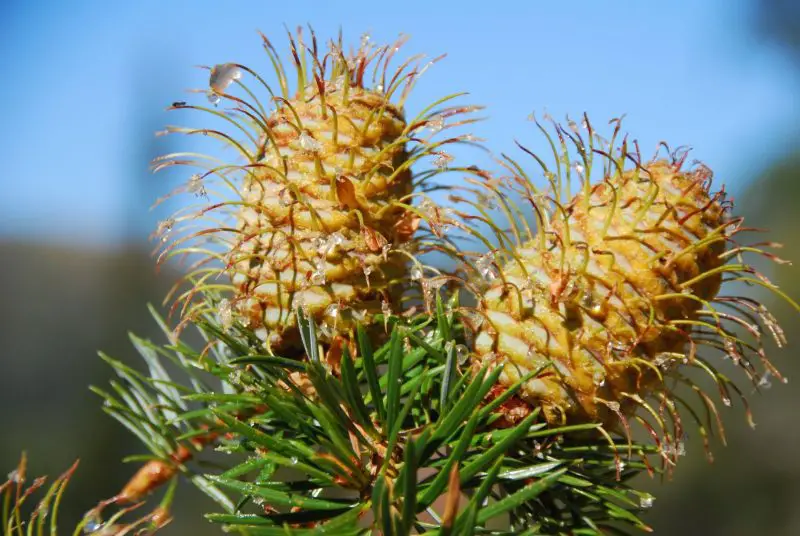
Santa Lucia Fir is an extremely rare and striking fir species endemic to the Santa Lucia Mountains in coastal California. It features long, narrow, dark green needles and a distinctive spire-like shape. Its bark is reddish-brown and develops deep furrows as it ages, and the tree can grow up to 130 feet in height.
It is typically found in steep, rocky canyons and ridges in the coastal mountain range, where it enjoys cool temperatures and regular fog. Unlike other firs, it produces very large cones with long, curved bracts extending well beyond the cone scales, making them easily recognizable.
Due to its rarity, Santa Lucia Fir is not commonly cultivated, but it can be grown in cool, coastal environments with good drainage and protection from extreme heat. It requires consistent moisture and thrives in USDA zones 7 to 8. This species is primarily of conservation interest and is one of the rarest firs in North America.
European Fir Trees
Abies alba – European Silver Fir
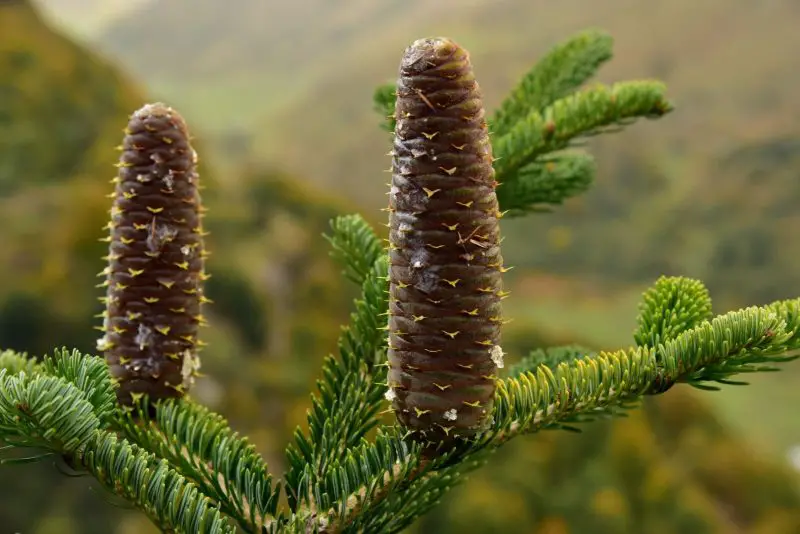
The European Silver Fir is a stately, tall evergreen native to mountainous regions of central and southern Europe, including the Alps and the Carpathians. It is known for its glossy, dark green needles with silvery undersides and its smooth, gray bark that becomes scaly with age. The tree can reach heights of over 150 feet in ideal conditions.
This species thrives in cool, moist forests with deep, well-drained soils and prefers elevations between 1,000 and 5,000 feet. It plays an important ecological role in mixed coniferous forests and is commonly found alongside Norway Spruce and European Beech. The upright cones are cylindrical, green when young, and disintegrate on the tree to release seeds.
European Silver Fir grows best in full sun to partial shade in temperate climates with high humidity. It requires protection from harsh winds and urban pollution. Hardy in USDA zones 5 to 7, it is sometimes cultivated as an ornamental tree and for reforestation efforts in suitable regions.
Abies borisii-regis – King Boris Fir
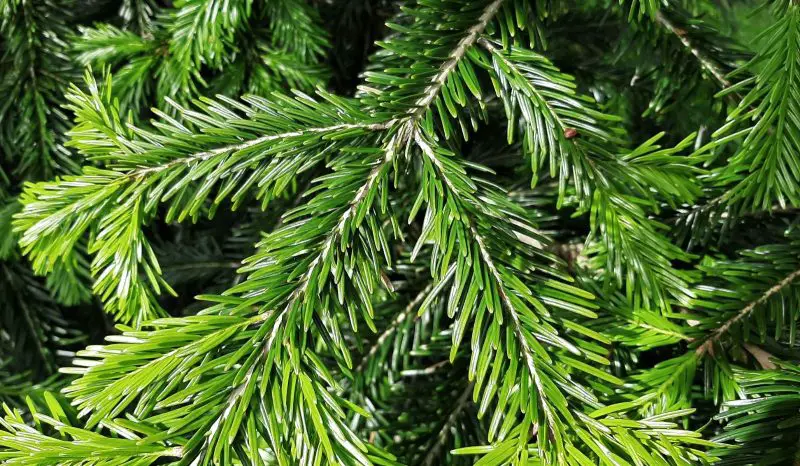
King Boris Fir is a fir species native to the Balkan Peninsula, particularly in Bulgaria, northern Greece, and parts of the former Yugoslavia. It is a natural hybrid between Abies alba and Abies cephalonica, combining features of both, with flat, dark green needles and a pyramidal shape. Its bark is gray and smooth when young, becoming furrowed as the tree matures.
This fir typically grows in mountainous areas at elevations between 2,000 and 6,000 feet, where it experiences cool, humid conditions and deep, calcareous soils. It is an important component of Balkan montane forests and provides habitat for various bird and mammal species. Its cones are cylindrical and upright, often reddish-brown when mature.
To grow King Boris Fir, choose a location with full sun and well-draining, slightly alkaline soil. It needs consistent moisture and a sheltered site protected from hot, dry winds. Hardy in USDA zones 5 to 7, it is mostly planted in its native range and valued for its ornamental appearance and hybrid vigor.
Abies nebrodensis – Sicilian Fir
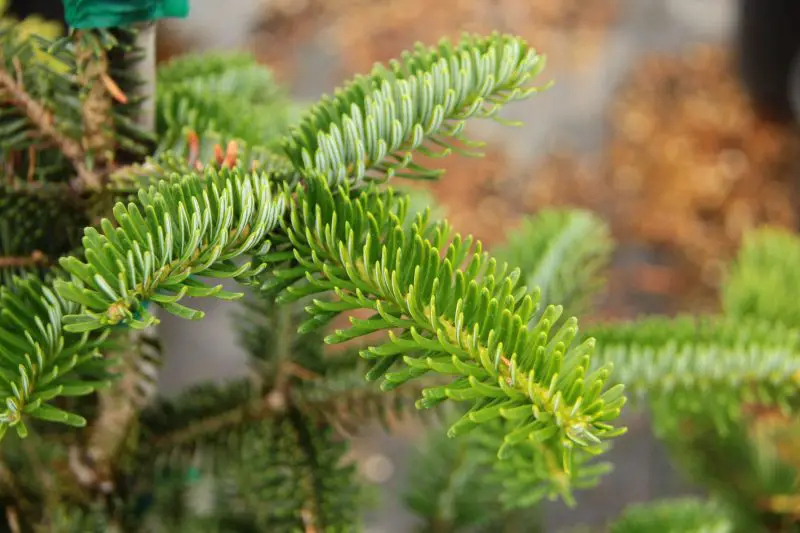
The Sicilian Fir is a critically endangered species endemic to a small area in the Madonie Mountains of northern Sicily. It is a medium-sized tree with short, dark green needles and a narrow, columnar form. The bark is smooth and gray, with visible resin blisters, and its growth is slow due to harsh environmental conditions.
This fir is limited to fewer than 30 mature individuals in the wild, growing at elevations between 4,000 and 6,000 feet in rocky, limestone soils. It is adapted to a Mediterranean mountain climate with cold, wet winters and dry summers. Its cones are upright and oval, maturing from green to brown.
Due to its critically endangered status, Sicilian Fir is protected by law and is rarely cultivated outside conservation programs. It requires cool, moist conditions, excellent drainage, and protection from summer drought. It is hardy in USDA zones 7 to 8 but needs a specialized environment to thrive.
Abies nordmanniana – Nordmann Fir
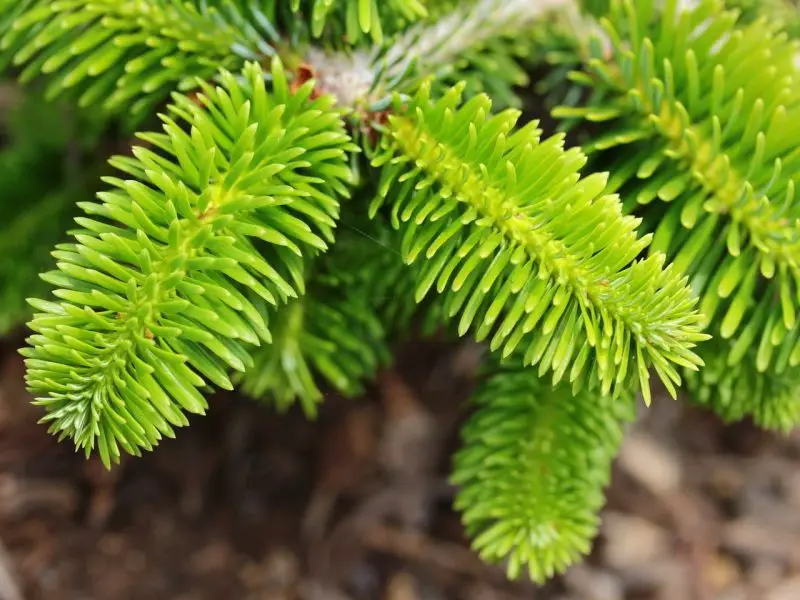
The Nordmann Fir is a popular Christmas tree species native to the Caucasus Mountains, especially in Georgia, Turkey, and parts of Russia. It is prized for its dense, symmetrical form, dark green glossy needles, and excellent needle retention. The bark is smooth and gray on younger trees, becoming rougher with age.
This species grows in cool, moist mountain regions at elevations between 3,000 and 7,000 feet. It thrives in well-drained, slightly acidic soils and prefers areas with high rainfall and cool summers. Its cones are large, upright, and cylindrical, usually disintegrating on the tree.
To cultivate Nordmann Fir, plant in full sun to partial shade with moist, well-draining soil. It requires regular watering, especially in dry periods, and is best suited to cool, temperate climates. Hardy in USDA zones 4 to 6, it is widely grown in Europe and North America for ornamental and commercial use.
Abies pinsapo – Spanish Fir
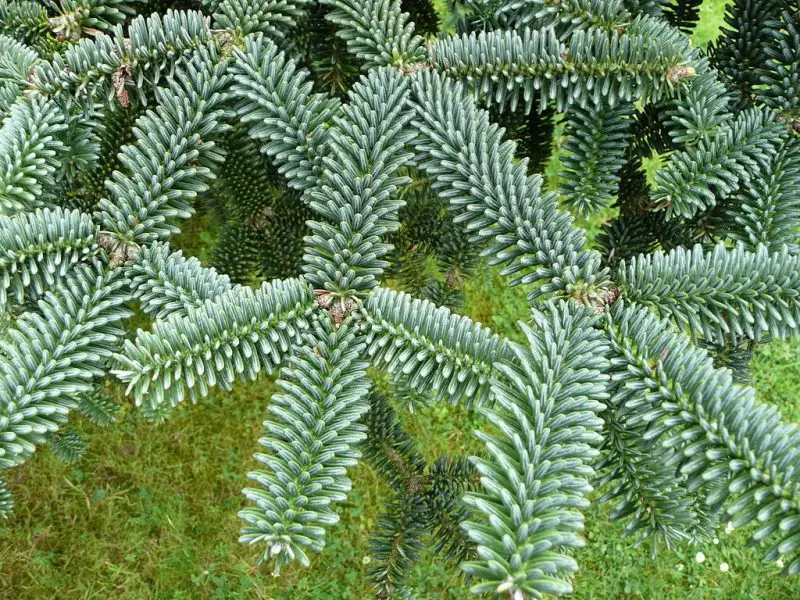
The Spanish Fir is a unique and striking conifer native to southern Spain, particularly the mountains of Andalusia. It features short, stiff, bluish-green needles that radiate around the branches like bottle brushes, giving it a dense, sculptural appearance. The bark is gray and develops fissures as it matures.
This species is well adapted to the Mediterranean climate, growing at elevations between 3,000 and 5,500 feet in limestone-rich soils. It is found in areas with cool, wet winters and dry, warm summers. Spanish Fir is considered a relict species with a limited range, and it is now protected in its natural habitat.
To grow Spanish Fir, provide full sun, well-drained alkaline soil, and supplemental water during dry spells. It tolerates drought better than most firs but still benefits from regular irrigation in cultivation. Hardy in USDA zones 6 to 8, it is grown for its ornamental value and is a rare collector’s species outside its native range.
Abies cephalonica – Greek Fir
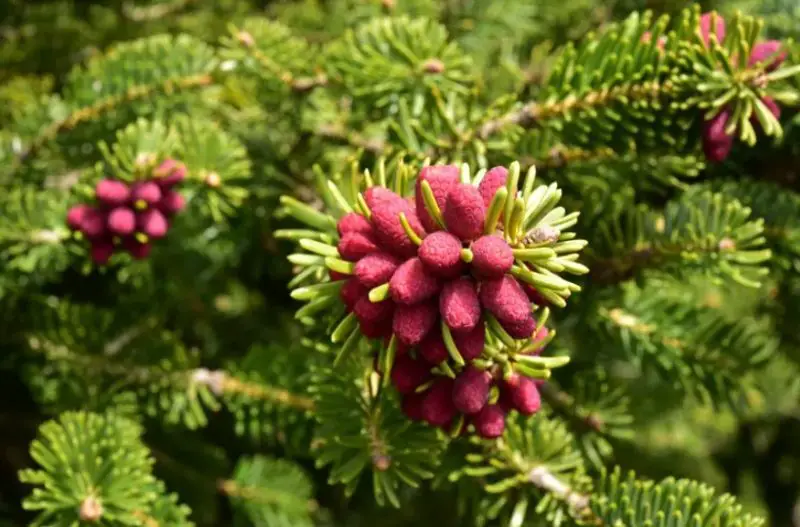
The Greek Fir is native to the mountainous regions of mainland Greece and is known for its tall, narrow shape and dark green, rigid needles. Its foliage is dense and spirally arranged around the branches, while the bark is smooth and silvery gray when young, developing furrows with age.
This fir typically grows at elevations of 2,000 to 6,500 feet in areas with rocky, limestone soils. It is adapted to dry, sunny climates with cold winters and hot summers, often forming pure stands in the higher elevations of the Pindus Mountains. Its cones are upright and purplish when young, turning brown with age.
Greek Fir prefers full sun and well-drained calcareous soils. It is relatively drought tolerant once established and can handle high summer temperatures better than most firs. Hardy in USDA zones 6 to 8, it is occasionally cultivated as an ornamental tree in Mediterranean climates and botanical gardens.
Asian Fir Trees
Abies koreana – Korean Fir
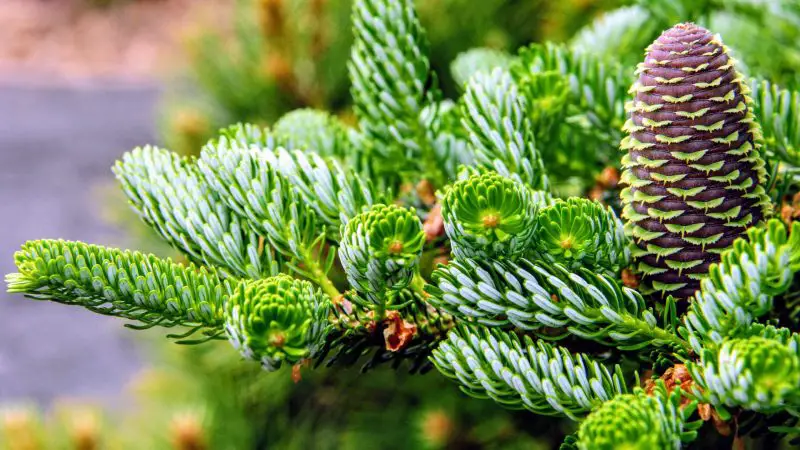
Korean Fir is a compact and decorative conifer native to the higher mountains of South Korea. It is admired for its short, dark green needles with bright silvery-white undersides and its early production of striking purple-blue cones, which appear even on young trees. The bark is gray and smooth, often with resin blisters.
This fir naturally grows at elevations between 3,000 and 6,000 feet, where the climate is cool, humid, and snowy. It prefers well-drained, slightly acidic soils and thrives in full sun. In its native habitat, it forms part of subalpine forest ecosystems, coexisting with hemlocks and maples.
Korean Fir is a popular ornamental tree due to its compact size and colorful cones. It grows best in USDA zones 5 to 7 and requires consistent moisture, good drainage, and protection from harsh, drying winds. It is well-suited to small gardens and cool temperate climates.
Abies firma – Momi Fir

The Momi Fir is a tall evergreen species native to the low to mid-elevation mountains of Japan. It is recognized for its long, flat, bright green needles that are more flexible than most firs, and its bark is grayish and becomes deeply fissured with age. The overall shape is broad and pyramidal.
This species grows naturally between 1,000 and 5,000 feet in elevation, favoring humid, temperate climates and acidic to slightly alkaline soils. It is found in mixed forests and is notable for its tolerance to heat and urban pollution, making it more adaptable than other firs.
Momi Fir is best grown in full sun to partial shade in well-draining soils. It requires moderate watering and can tolerate some drought once established. Hardy in USDA zones 6 to 9, it is often planted as an ornamental or shade tree, especially in warmer regions where other firs struggle.
Abies veitchii – Veitch’s Fir
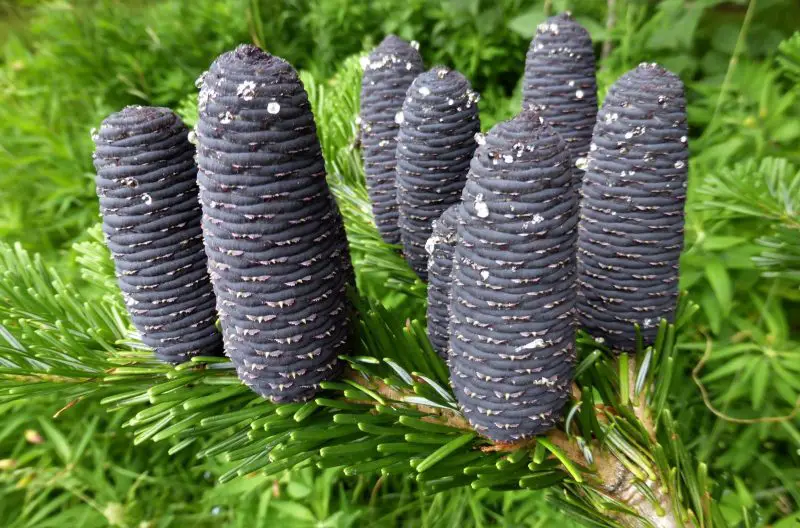
Veitch’s Fir is a graceful and elegant tree native to the mountains of central and northern Japan. It features soft, dark green needles with silvery-white undersides, giving the tree a shimmering appearance in the wind. The bark is smooth and gray on young trees, developing shallow ridges as it ages.
This fir thrives at elevations between 3,000 and 6,000 feet, where it experiences cold winters and cool summers. It prefers moist, acidic soils and is commonly found in mixed coniferous forests alongside spruce and beech species. Its cones are purple when immature and turn brown at maturity.
In cultivation, Veitch’s Fir grows well in USDA zones 5 to 7, requiring a cool, humid environment with regular watering. It performs best in full sun or light shade and appreciates shelter from hot winds. Due to its ornamental value, it is occasionally planted in parks and large gardens.
Abies mariesii – Maries’ Fir
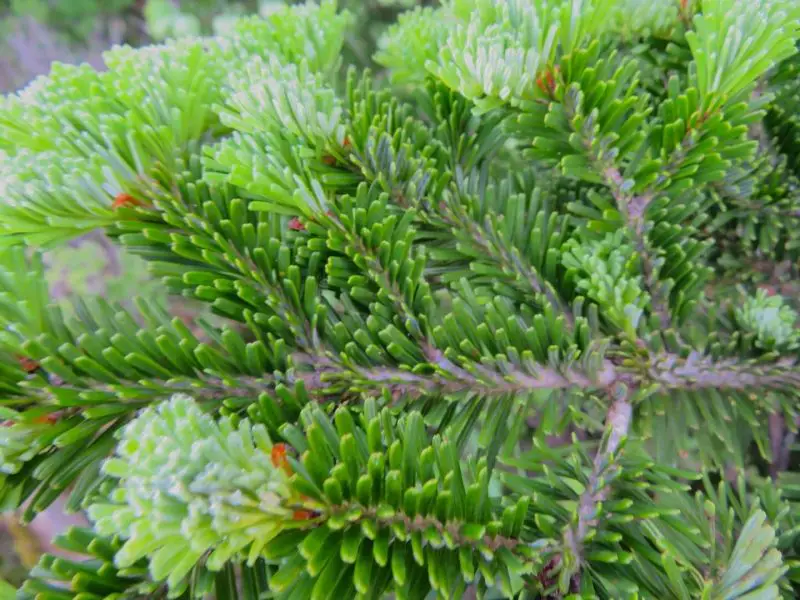
Maries’ Fir is a slow-growing, medium-sized conifer native to the subalpine zones of Honshu, Japan. It is known for its soft, dark green needles with white undersides and a narrow, conical form. The bark is light gray and smooth when young, becoming more furrowed with age.
This species is adapted to high elevations between 5,000 and 7,500 feet, where snow cover is heavy, and temperatures are low for much of the year. It prefers cool, moist environments with acidic, well-drained soils and often grows in foggy mountain forests.
To cultivate Maries’ Fir, provide a cool, sheltered location with consistent moisture and partial shade if summers are hot. It is hardy in USDA zones 4 to 6 and is appreciated in temperate gardens for its refined foliage and slow, manageable growth habit.
Abies homolepis – Nikko Fir
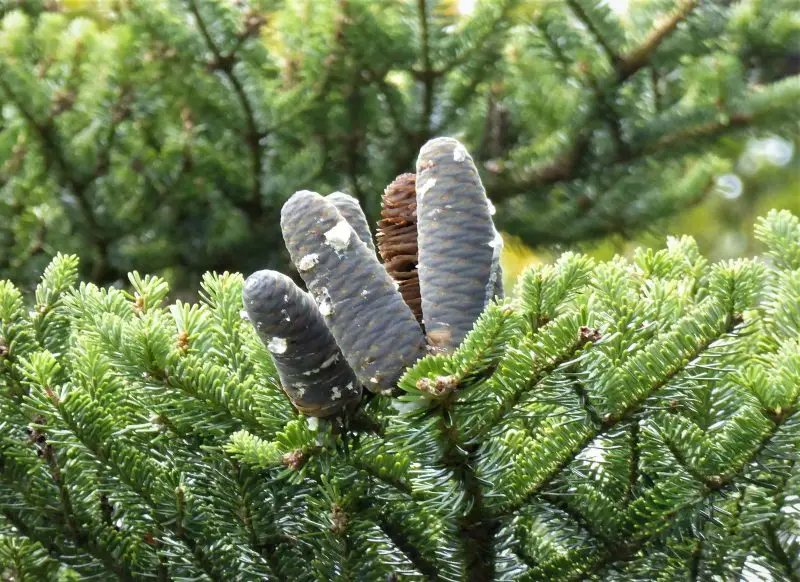
Nikko Fir is a tall, stately species native to the mountains of central Japan, particularly the Nikko region. It has dense, dark green foliage with a subtle bluish tint and white banding beneath each needle. The tree has a symmetrical, conical shape and a strong central leader.
This fir typically grows at elevations between 3,000 and 6,000 feet in mixed forests on volcanic or well-draining soils. It is well adapted to cold, snowy winters and humid, cool summers. Its cones are slender and upright, changing from green to brown as they mature.
Nikko Fir prefers full sun and moist, acidic soils with good drainage. It is relatively tolerant of urban conditions and makes an excellent ornamental tree for larger landscapes. Hardy in USDA zones 5 to 7, it requires some protection from intense summer heat and drying winds.
Abies sachalinensis – Sakhalin Fir
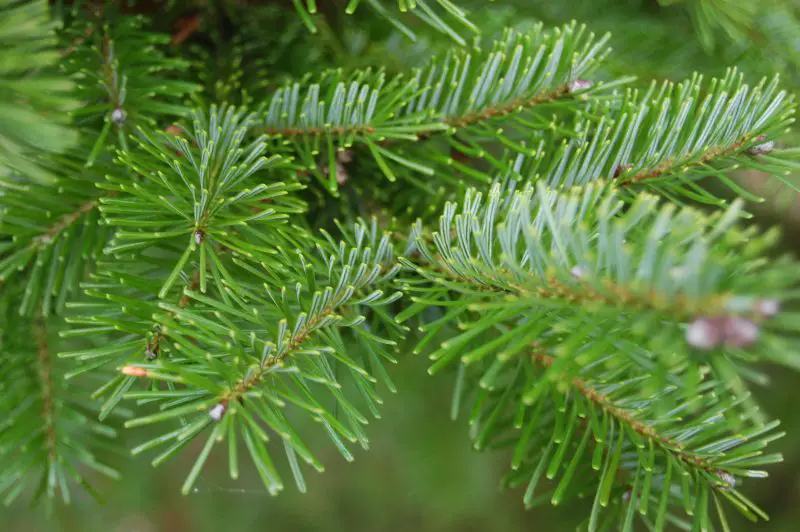
Sakhalin Fir is a large conifer native to the island of Sakhalin, located between Russia and Japan. It is characterized by its straight trunk, dense, dark green needles, and grayish-brown bark. The tree typically has a narrow, conical shape with soft foliage that gives it a graceful appearance. The cones are cylindrical and grow upright, turning from green to brown as they mature.
This species thrives at elevations of 2,000 to 4,000 feet in cool, moist environments. It is found in mixed forests with heavy snowfall during the winter months and moderate rainfall throughout the year. Sakhalin Fir prefers acidic, well-drained soils and is adapted to the cool, subarctic climate of its native region.
To grow Sakhalin Fir, choose a location with full sun to partial shade, providing consistent moisture and protection from extreme heat. It is hardy in USDA zones 5 to 7 and makes an excellent ornamental tree for cold temperate regions. It is also valued for its wood, which is used in construction and paper manufacturing.
Abies sibirica – Siberian Fir
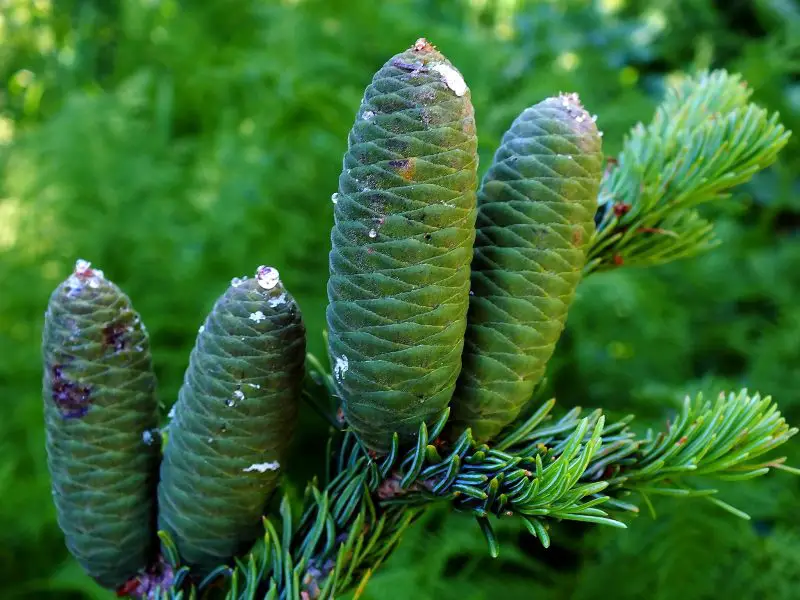
The Siberian Fir is a hardy, medium-sized conifer native to the mountainous regions of Siberia. It features short, dark green needles with silver undersides, arranged in a spiraling fashion around the branches. The bark is gray and smooth, becoming fissured as the tree matures. Siberian Fir has a narrow, pyramidal form, which becomes broader with age.
This species grows naturally at elevations between 2,500 and 5,000 feet, often in cold, subalpine forests where snow is common in the winter. It thrives in acidic, well-drained soils and is found in regions with long, harsh winters and short, cool summers. Its cones are upright, cylindrical, and disintegrate as they mature, releasing seeds in the process.
Siberian Fir requires cool, moist conditions and is best planted in full sun to partial shade. It is hardy in USDA zones 4 to 7 and is particularly suitable for colder climates. This species is valued both for its ecological contributions and as an ornamental tree in temperate gardens.
Abies spectabilis – Himalayan Fir

The Himalayan Fir is a tall, robust tree native to the eastern Himalayan mountain range, particularly in Nepal and northern India. It is characterized by its dense foliage, with long, slender dark green needles that have a blueish hue underneath. The tree has a straight trunk and conical shape, which makes it an attractive ornamental specimen. The bark is gray-brown and smooth, gradually becoming scaly as the tree matures.
This species thrives at elevations between 3,000 and 8,000 feet, where it enjoys a cool, moist climate. Himalayan Fir prefers acidic soils with good drainage and grows in mountainous areas with heavy snowfall during the winter months. The cones are long, cylindrical, and green at first, turning brown when mature.
Himalayan Fir can be cultivated in USDA zones 6 to 8, requiring full sun and regular watering. It needs protection from strong winds and extreme heat. This species is valued for its wood and resin, which are used in various industries, as well as for its beauty in landscapes and gardens.
Abies pindrow – West Himalayan Fir
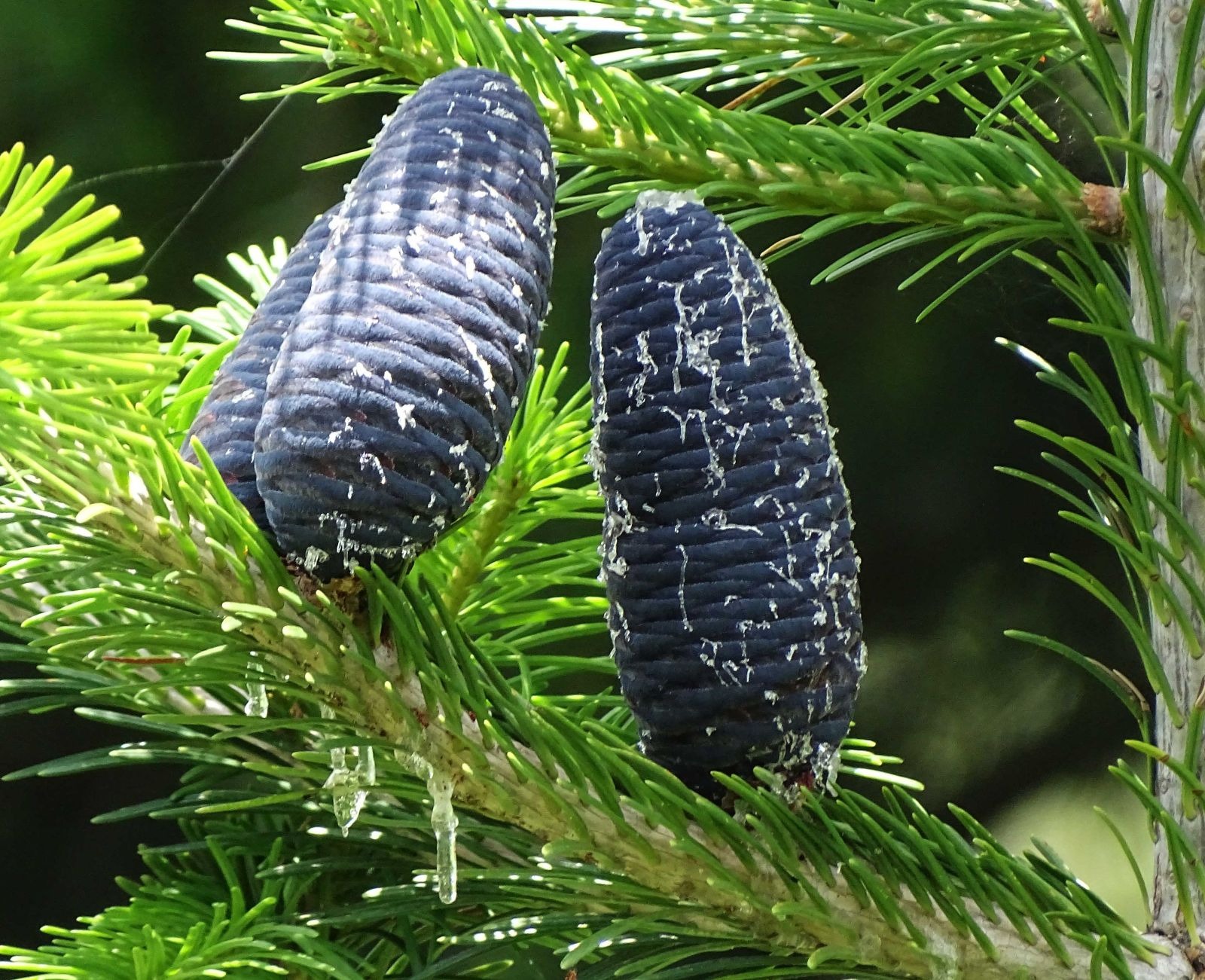
The West Himalayan Fir, closely related to the Himalayan Fir, is found in the western Himalayan region, ranging from northern India to Pakistan. It is a tall evergreen with dense, dark green needles that have silvery undersides. The bark is smooth and light gray when young, becoming deeply furrowed as the tree matures. It has a straight trunk and a conical crown, making it visually striking.
West Himalayan Fir naturally grows in moist, temperate climates at elevations between 5,000 and 10,000 feet, where it experiences cool, wet summers and cold, snowy winters. It thrives in acidic soils and is commonly found in mixed coniferous forests. Its cones are cylindrical and upright, turning from green to brown as they mature.
To grow West Himalayan Fir, plant in well-drained, acidic soil with consistent moisture. It is hardy in USDA zones 6 to 8 and prefers cool, sheltered locations away from harsh winds and extreme temperatures. This fir is an excellent choice for large gardens and reforestation projects.
Abies delavayi – Delavay’s Fir (China)
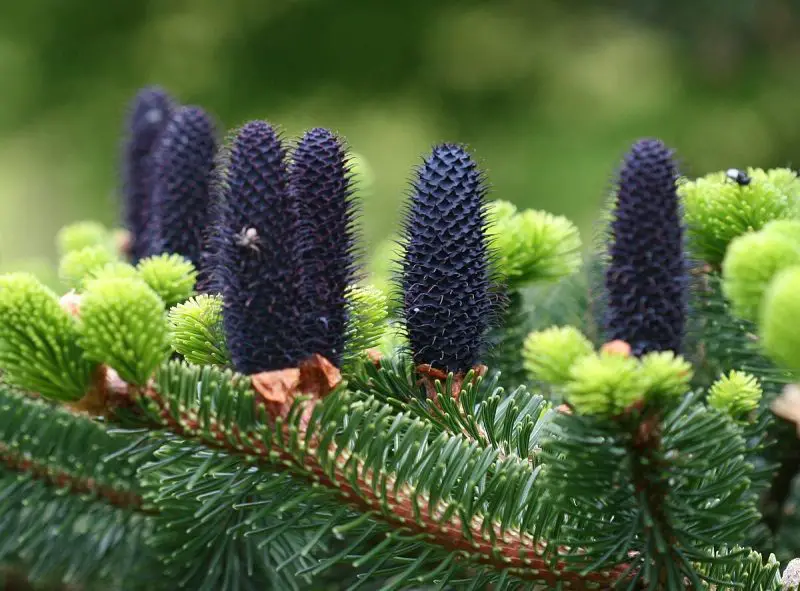
Delavay’s Fir is a rare and distinctive conifer native to southwestern China, primarily in the Sichuan and Yunnan provinces. It is a medium-sized tree known for its graceful, conical shape and blue-green needles. The foliage is soft and arranged in a spiral pattern around the branches. The bark is grayish and smooth when young, becoming rougher and more textured with age.
This species thrives in cool, temperate climates at elevations between 6,000 and 10,000 feet, often growing in mountainous areas with high rainfall and moist, acidic soils. Delavay’s Fir is typically found in mixed coniferous forests and is adapted to environments with significant seasonal variation in temperature and moisture. The cones are cylindrical, upright, and green at first, turning brown as they mature.
Delavay’s Fir is best grown in USDA zones 7 to 9, requiring full sun or partial shade and well-draining, acidic soil. It is relatively tolerant of cold, moist conditions but needs protection from extreme heat and drought. It is cultivated for its ornamental beauty, especially in cooler climates and botanical gardens.
Abies forrestii – Forrest’s Fir
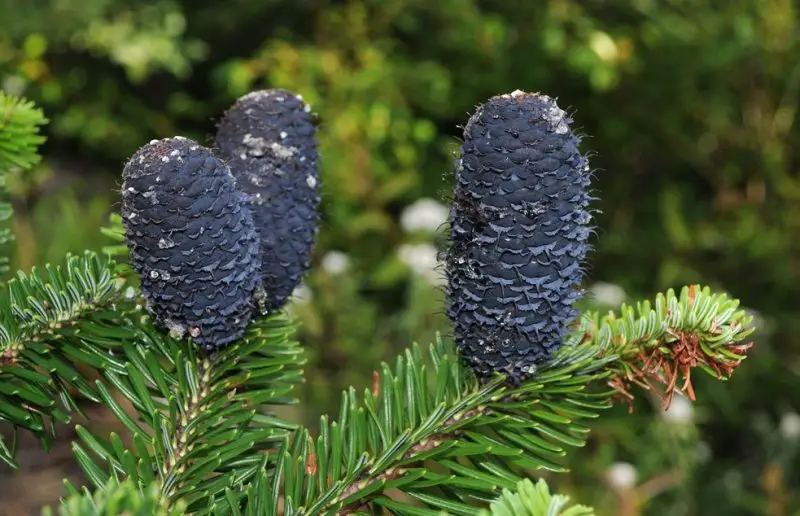
Forrest’s Fir is a medium-sized conifer native to the mountainous regions of southwestern China, particularly in the provinces of Sichuan and Yunnan. This species is characterized by its narrow, conical shape and dark green, flat needles with silver undersides. The bark is grayish-brown and smooth on young trees, becoming more furrowed as the tree matures. The tree’s cones are cylindrical, initially green, and turn brown when fully mature.
Forrest’s Fir grows naturally at elevations between 5,000 and 9,000 feet, thriving in cool, humid environments. It prefers well-drained, acidic soils and is commonly found in mixed forests, where it grows alongside other coniferous species. The climate in its native habitat is typically cool, with long, wet winters and short, mild summers.
This species is best cultivated in USDA zones 7 to 9, requiring a sheltered location with regular moisture and protection from extreme heat and drought. It grows well in full sun or partial shade and is highly valued for its ornamental qualities. Forrest’s Fir is used in landscaping for its graceful shape and attractive foliage.
Abies chensiensis – Shensi Fir
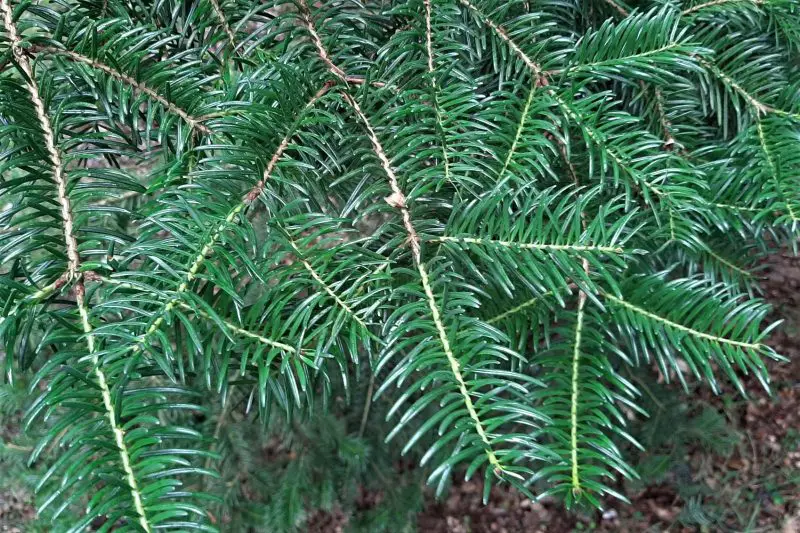
Shensi Fir is a large, evergreen tree native to the mountainous regions of central China, specifically in the province of Shaanxi. It is characterized by its straight trunk and conical shape, with dark green needles that have silver undersides. The bark is smooth and gray, becoming slightly fissured with age. The cones are cylindrical, upright, and turn brown when mature.
This species thrives at elevations between 4,000 and 7,000 feet, in regions with cold winters and cool, wet summers. Shensi Fir prefers moist, acidic soils and is commonly found in subalpine forests, where it grows alongside species such as spruce and birch. It is adapted to the mountainous terrain, where snow accumulation during the winter is common.
Shensi Fir requires full sun to partial shade and well-drained, acidic soils for optimal growth. It is hardy in USDA zones 6 to 8 and is relatively tolerant of cold and wet conditions. This fir is commonly used as an ornamental tree in temperate gardens and parks, where it adds a vertical, conical element to the landscape.
Abies fargesii – Farges’ Fir

Farges’ Fir is a striking conifer native to the high mountains of southwestern China, particularly in the provinces of Sichuan and Yunnan. The tree features dense, soft needles that are dark green on top and silver beneath. It has a narrow, conical form and smooth, grayish bark that becomes more textured with age. The cones are cylindrical and grow upright, changing from green to brown as they mature.
This species grows naturally in cool, subalpine forests at elevations of 6,000 to 9,000 feet. Farges’ Fir prefers moist, acidic soils and is commonly found in regions with significant rainfall and snow accumulation during the winter months. It thrives in areas that are cool and sheltered from extreme heat.
Farges’ Fir is best suited for USDA zones 7 to 9, requiring full sun or partial shade and well-drained, acidic soil. It needs regular moisture and performs best in cool, humid environments. As an ornamental tree, it is appreciated for its elegant shape and attractive foliage, often planted in large gardens and botanical collections.
Abies recurvata – Recurved Fir
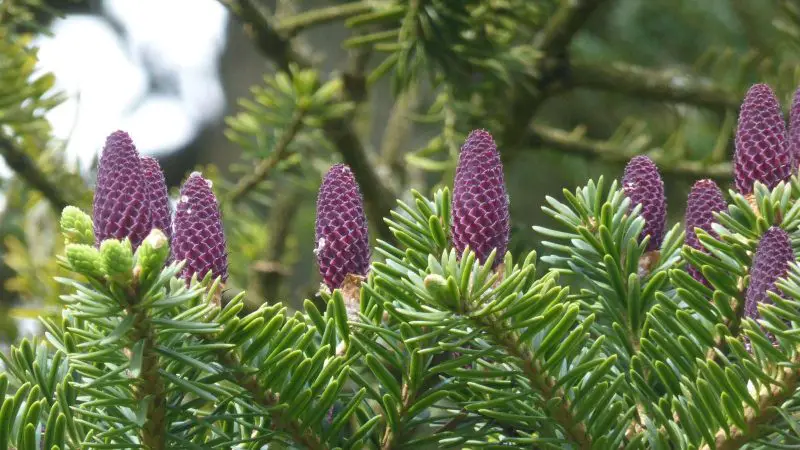
Recurved Fir is a medium-sized, rare conifer native to the high mountains of central China. It is distinguished by its unique needles, which curve downward from the branch tips, giving the tree a distinct appearance. The needles are dark green with silver undersides, and the bark is smooth and gray, becoming more deeply furrowed as the tree matures. The cones are cylindrical, green when young, and turn brown at maturity.
This species thrives in subalpine forests at elevations between 7,000 and 9,000 feet. It prefers cool, moist conditions and well-drained, acidic soils. Recurved Fir is found in regions with cool summers and heavy snow during the winter months, where it grows alongside other firs and spruce species.
Recurved Fir requires full sun to partial shade and consistent moisture to thrive. It is hardy in USDA zones 7 to 9 and is best suited for cool, humid climates. Due to its unique foliage and attractive form, this species is often planted in botanical gardens and is highly valued for ornamental purposes.
Abies fabri – Faber’s Fir
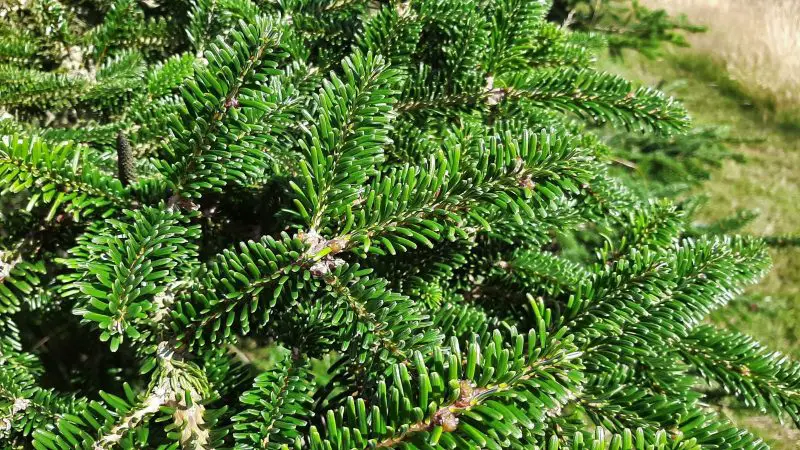
Faber’s Fir is a tall evergreen native to the mountainous regions of southern China, primarily in the provinces of Sichuan and Yunnan. It is characterized by its dense, dark green needles that are soft to the touch and have a silver underside. The tree has a narrow, conical shape and smooth gray bark that becomes more furrowed as it matures. The cones are cylindrical and upright, turning from green to brown as they mature.
This species grows at elevations between 5,000 and 8,000 feet, in cool, temperate climates. Faber’s Fir thrives in moist, well-drained soils and is often found in high-altitude forests where snow is common in the winter. It is adapted to growing in regions with cool summers and long, snowy winters.
Faber’s Fir requires full sun to partial shade and regular watering for optimal growth. It is hardy in USDA zones 7 to 9 and is particularly suited for cold, temperate regions. This fir is valued for its ornamental qualities and is commonly planted in large gardens, parks, and reforestation projects.
Abies yuanbaoshanensis – Yuanbao Mountain Fir (rare)

Yuanbao Mountain Fir is a rare conifer native to the high-altitude regions of southwestern China, specifically in the Yuanbao Mountains. This species is characterized by its dark green, flat needles with silver undersides, and its narrow, conical form. The tree’s bark is smooth and gray in young specimens, becoming more fissured with age. The cones are cylindrical and upright, maturing from green to brown.
This fir grows in cool, moist environments at elevations between 6,000 and 8,000 feet, thriving in subalpine forests. The climate in its natural habitat is characterized by cool summers and cold winters with snow, providing the tree with the necessary moisture and shelter it needs. The Yuanbao Mountain Fir is found in regions with heavy rainfall and is typically associated with mountain slopes and ridges.
This species is best suited for USDA zones 7 to 9 and thrives in well-drained, acidic soils. It requires full sun or partial shade, along with regular moisture for optimal growth. Due to its rarity and ornamental qualities, it is highly valued for landscaping and conservation purposes.
Abies beshanzuensis – Baishanzu Fir (critically endangered)
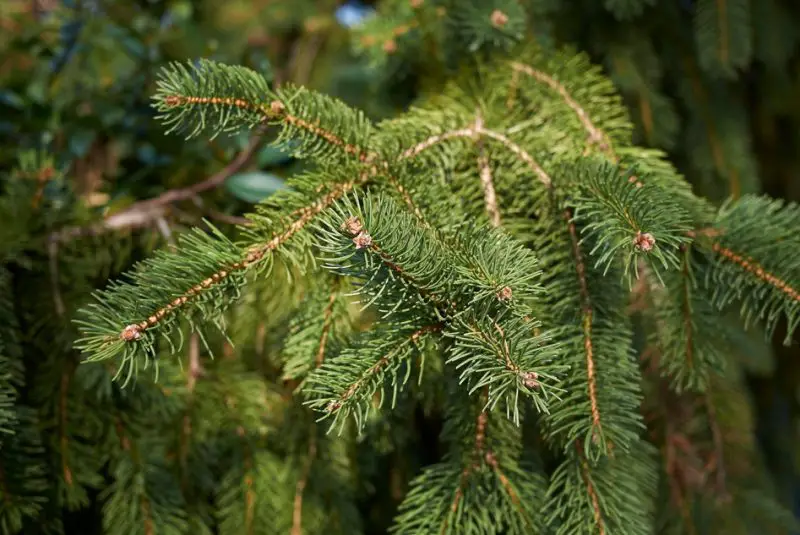
Baishanzu Fir is critically endangered and native to the mountains of eastern China, particularly in the Baishanzu region. This species is known for its large, glossy green needles that are flat and have a silver sheen on the underside. The tree has a conical shape, with smooth, gray bark that matures into a more textured surface as it ages. Its cones are cylindrical and upright, initially green, and turn brown when mature.
The Baishanzu Fir is found at elevations ranging from 3,000 to 5,000 feet in subalpine forests. It thrives in cool, humid climates with high rainfall and moist soils. The species is typically found in shaded areas of the mountains, where it grows in a cool, sheltered environment, often near streams or in valleys.
This species requires USDA zones 7 to 9, full sun to partial shade, and well-drained, acidic soils to grow well. Due to its endangered status, it is mainly conserved in its native range and is not commonly cultivated outside of specialized botanical collections. It is a valuable tree for conservation efforts due to its rarity.
Abies ziyuanensis – Ziyuan Fir (rare)
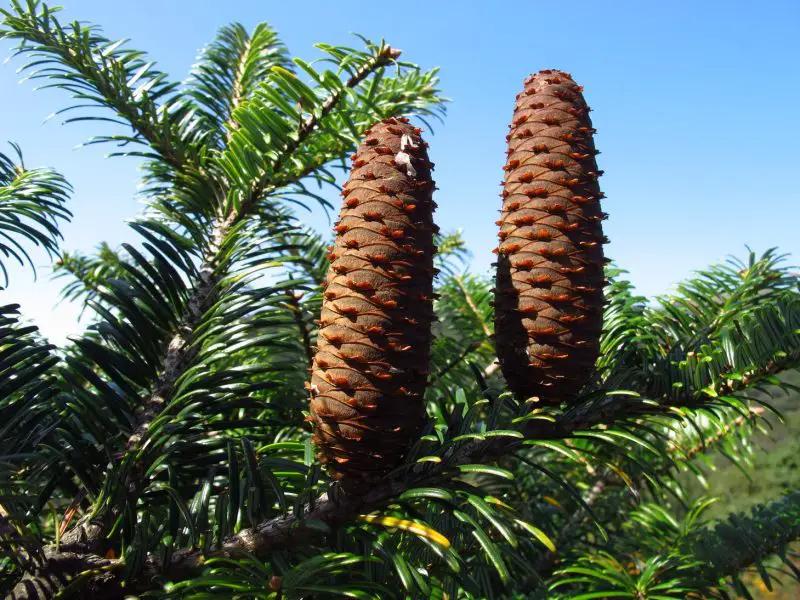
Ziyuan Fir is a rare conifer native to the Ziyuan Mountains in southern China. It is recognized for its dark green, flat needles with a silvery underside and a conical growth habit. The bark is smooth and gray when young and becomes more textured with age. The tree’s cones are cylindrical, initially green, and turn brown as they mature.
This species thrives at elevations between 4,000 and 7,000 feet in cool, subalpine forests, where it enjoys moist, well-drained soils. The natural climate of its habitat is characterized by long, cold winters with significant snowfall and cool, wet summers. Ziyuan Fir is found in regions with high rainfall, and it thrives in shaded mountain environments.
Ziyuan Fir requires full sun to partial shade, well-drained, acidic soils, and regular moisture for optimal growth. It is best suited for USDA zones 7 to 9 and is highly valued for its ornamental qualities, though it remains rare due to its limited natural distribution.
Abies religiosa – Sacred Fir (Mexico, but sometimes included in Asian listings)
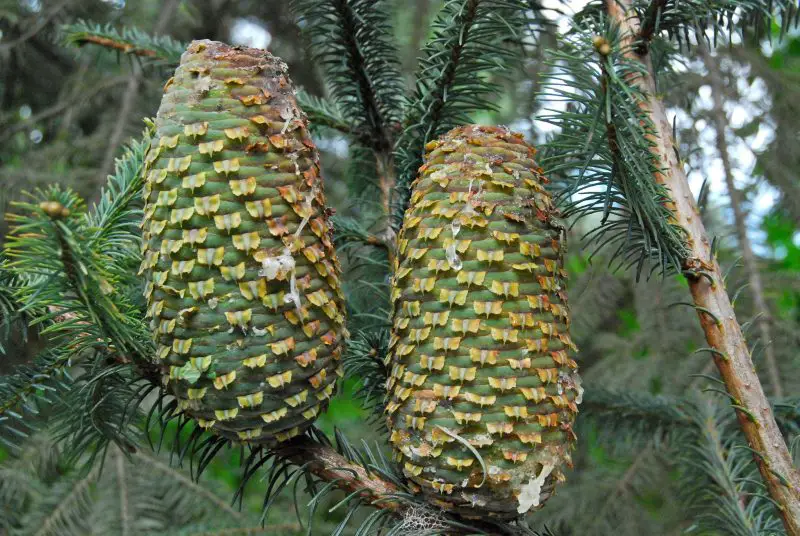
Sacred Fir, native to the high mountains of Mexico, is a unique species that sometimes appears in listings of Asian firs due to its similarities to certain species found in the region. The tree has long, dark green needles with silvery undersides, and it grows in a tall, conical form. The bark is smooth and gray in young trees and becomes more furrowed as the tree matures. Its cones are cylindrical, upright, and change from green to brown as they mature.
This fir is typically found at elevations between 7,000 and 9,000 feet in the mountains of central and southern Mexico. It thrives in cool, mountainous environments with mild summers and cold, snowy winters. The species prefers moist, well-drained soils and is often found in forests that receive regular rainfall.
Sacred Fir is best suited for USDA zones 8 to 10 and requires full sun to partial shade for optimal growth. It prefers well-drained, acidic soils and regular moisture. This species is valued both for its historical and cultural significance in Mexican traditions, as well as its ornamental use in large gardens and landscapes.
North African Fir Trees
Abies numidica – Algerian Fir
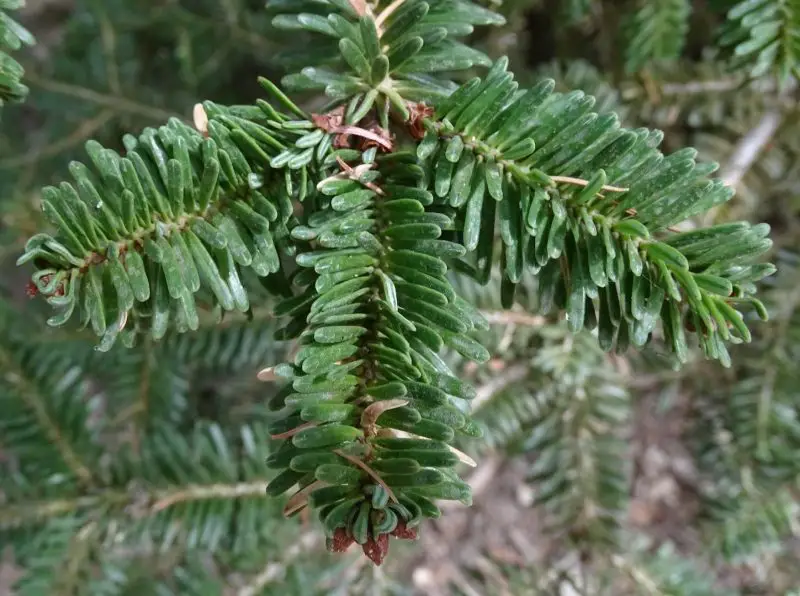
Algerian Fir is a medium-sized evergreen tree native to the mountainous regions of Algeria and Tunisia in North Africa. It is characterized by its dense, dark green needles that are flat and arranged in a spiral pattern along the branches. The bark is smooth and gray, becoming more fissured with age. The cones of the Algerian Fir are cylindrical, upright, and mature from green to brown.
This species grows in mountainous areas at elevations between 4,000 and 6,500 feet. It thrives in cool, humid climates, typically found in the highlands of the Tell Atlas mountain range. Algerian Fir prefers moist, well-drained, acidic soils and is commonly associated with mixed forests, where it shares its habitat with oak and pine species. The species is adapted to grow in areas with long, wet winters and cool summers.
Algerian Fir is best suited for USDA zones 7 to 9 and requires full sun or partial shade for optimal growth. It needs regular moisture and performs well in cool, temperate climates. This fir is valued for its ornamental appeal and is occasionally used in landscaping in regions with suitable climates.
Abies marocana – Moroccan Fir

Moroccan Fir is a rare conifer native to the mountains of Morocco, specifically in the Middle Atlas region. The tree is known for its slender, conical shape and long, dark green needles that are soft to the touch with silver undersides. The bark is grayish-brown and smooth when the tree is young, becoming more textured as it ages. Its cones are cylindrical, upright, and turn from green to brown as they mature.
This species thrives in cool, moist environments at elevations between 4,000 and 7,000 feet. Moroccan Fir is typically found in mountainous regions with cool winters and moderate rainfall. It prefers well-drained, acidic soils and is often found in subalpine forests, where it grows alongside other firs and pines.
Moroccan Fir is best suited for USDA zones 7 to 9, requiring regular moisture and well-drained, acidic soils for optimal growth. It prefers full sun to partial shade and is valued for its ornamental qualities. Due to its rarity, it is mostly cultivated in botanical collections and conservation areas, although it occasionally appears in suitable gardens and landscapes.


